#frank ferrara
Text
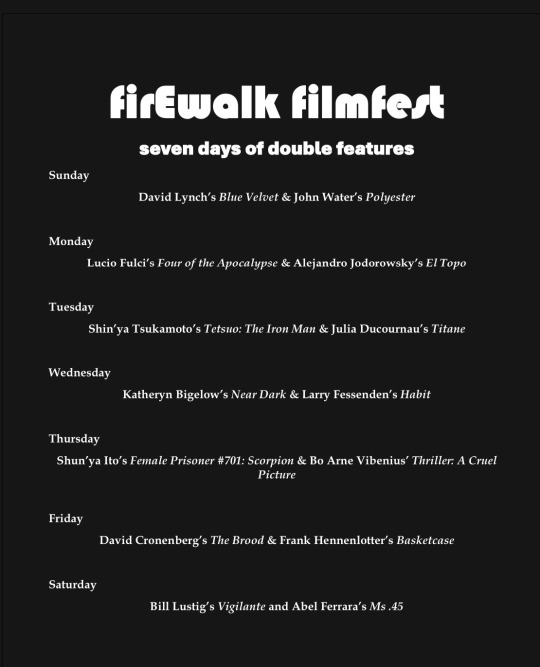
Have you ever wanted to program your own film festival? This is my imaginary fest, seven days of double features, with short films, trailers, and music videos mixed in with the films. Each pairing are films that are thematically in conversation with each other.
#david cronenberg#david lynch#abel ferrara#julia ducournau#larry fessenden#frank henenlotter#kathryn bigelow#shin’ya tsukamoto#bill lustig#lucio fulci#john waters#alejandro jodorowsky
4 notes
·
View notes
Text

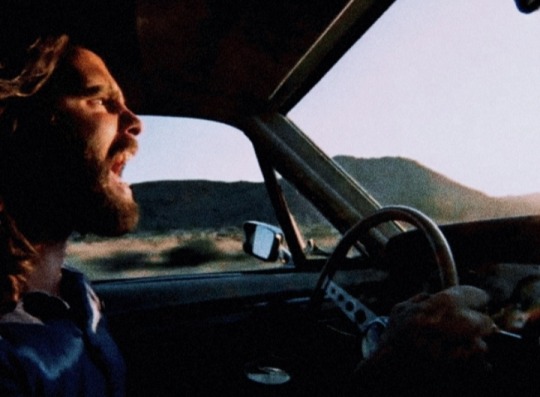
#jim morrison#when you're strange#film caps#hwy#an american pastoral#60s#paul ferrara#frank lisciandro#babe hill
21 notes
·
View notes
Text
'Twas the Night Before Christmas, When All Through the EVIL "A Creature Was Stirring" reviewed! (Well Go USA Entertainment / Blu-ray)
Purchase “A Creature Was Stirring” Here at Amazon.com
During the height of a 6-day Christmas blizzard, nurse Faith remains home to care for her mysteriously afflicted daughter Charm. Faith diligently stays vigilant over her daughter’s inexplicable condition with test after test and maintaining Charm’s constant body temperature between 102 to 104.4 degrees, seemingly stabilizing Charm’s…

View On WordPress
#10/09 Films#A Creature Was Stirring#Aaron B. Koontz#Abel Ferrara#Alexander Chinnic#Annalise Basso#blu-ray#Brain Damage#Cameron Burns#Chrissy Metz#Christmas#Connor Paolo#Damien LEVeck#Drug Addiction#Frank Henelotter#Good Luck#Habit#Halloween &039;07#horror#Larry Fessenden#Natalie LeVeck#Nightingale#Oculus#Paper Street Pictures#Scare Package#Scout-Taylor Compton#Shannon Wells#Skubalon#slipcover#Stake Land
0 notes
Text
Guest post from John Martin Rare Book Room
Hardin Library of the Health Sciences
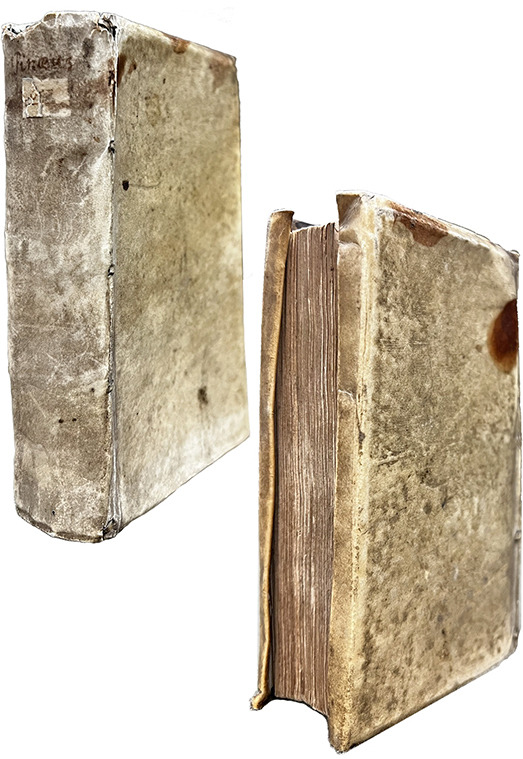
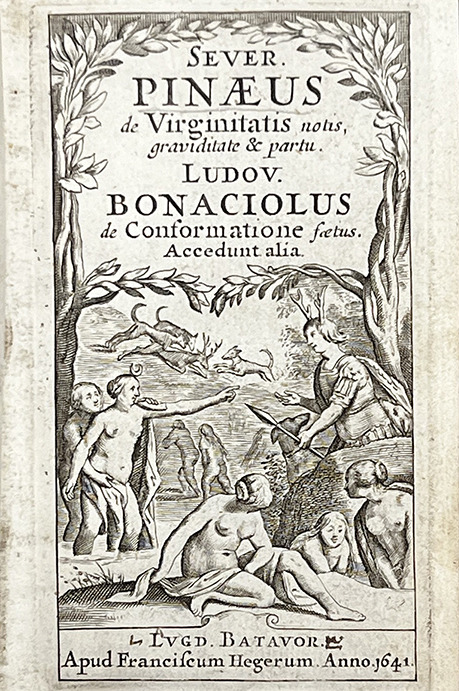

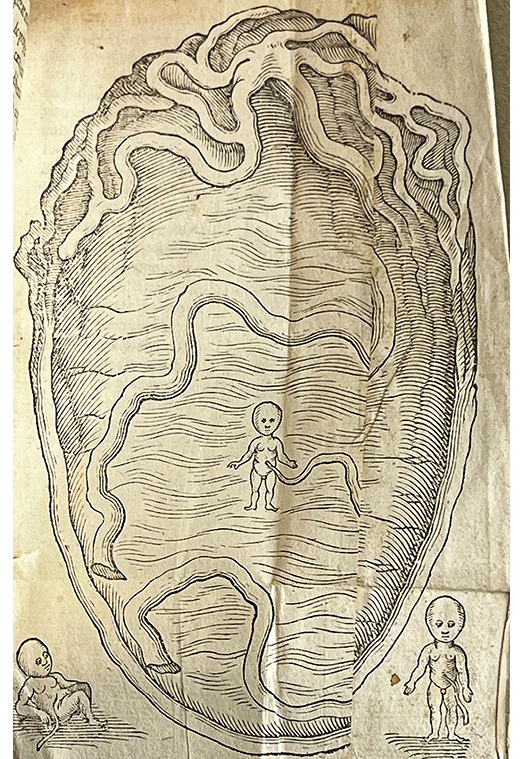
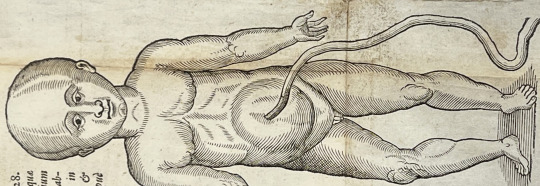
PINEAU, Severin (1550?–1619). De integritatis et corruptionis virginum notis: graviditate item & partu naturali mulierum, opuscula.
BONACCIUOLI, Luigi (d. 1540). Enneas muliebris.
PLATTER, Felix (1536-1614). De origine partium, earumque in utero conformatione.
GASSENDI, Pierre (1592-1655). De septo cordis pervio, observatio.
SEBISCH, Melchior (1578-1674) De notis virginitatis.
Third edition. Printed in Leiden by Francis Heger, 1641. 28 pages. 13 cm tall.
We are big fans of tiny books here at the JMRBR. And banned books, too. So we thought we would highlight a curious little book packed with a number of treatises on obstetrical and gynecological topics, once considered so risqué that it was condemned and banned in several locations. Not coincidentally, it was also a hit that spurred the printing of several editions. The book is also fascinating for its illustrations.
This volume is a collection of gynecological and obstetrical texts. The content, especially the first and last works, caused quite a stir due to the frankness and detail regarding virginity (and how it is lost), pregnancy, and childbirth - so much so that it was confiscated in many locations. Naturally, it was also very popular and printed in several editions.
And by "virginity," the authors specifically mean female virginity. Authors of early medical works surprisingly did not seem too interested in male virginity! All snarkiness aside, the study of female anatomy and physiology, especially of anything to do with sex, pregnancy, and birth, has a long and problematic history. We encourage you to read more about this history here and here and here and here. This is by no means an exhaustive list.
Five works are gathered under the main title, De integritatis et corruptionis virginum notis: graviditate item & partu naturali mulierum, opuscula [On the integrity and corruption of known virgins], by the 16th-century French surgeon Séverin Pineau (1550?–1619). Pineau was born in Chartres but trained and practiced in Paris and was surgeon to several French kings. He is most known for his works on gynecological and obstetrical topics, including as an advocate for symphysiotomy (also known as a pelviotomy), a procedure performed on women in labor in which the cartilage of the pelvis is cut to widen it when there is a problem with the position of the baby. This procedure is rarely performed today, with caesarean section preferred instead.
De integritatis et corruptionis virginum notis first appeared as part of Pineau's 1597 work, Opusculum physiologum & anatomicum in duos libellos distinctum. It is divided into two parts. The first provides anatomical descriptions of female genitalia. Interestingly, Pineau uses metaphors when naming certain parts. It was common among French midwives at the time to use metaphors instead of anatomical terms when describing female sexual anatomy (e.g., babolle abbatue), while our old friend, Louise Bourgeois, avoided both metaphor and specifics, referring instead to general areas of anatomy.
The first part of Pineau's work also lists problems that can occur during pregnancy and labor and surgical methods for treating the problems. The second part covers formation of the fetus. Several interesting woodcut illustrations accompany Pineau's text, including the muscle-bound fetus above.
The second treatise is by Luigi Bonacciuoli (d. 1540s). Bonacciuoli was a physician and anatomist who specialized in obstetrics and practiced at the University of Ferrara in Northern Italy. Enneas muliebris [Treatise on Women in Nine Parts], first printed in about 1505, is a work on obstetrical and gynecological topics based on Bonacciuoli's university lectures. It contains a lengthy dedication to Lucrezia Borgia, the duchess of Ferrara and daughter of Pope Alexander VI and one of the most powerful female leaders of the time.
In the book, Bonacciuoli describes the anatomical structures, such as the mons veneris, the clitoris, and the hymen, and includes a chapter detailing how the fetus is nourished and when fetal movements develop. Other chapters include discussions of the signs of conception, the causes and signs of abortion, delivery, and care of the newborn. He based most of his material on classic works.
The next title belongs to Felix Platter (1536-1614), a Swiss physician and anatomist who practiced at the University of Basel. He remained city physician until his death and was successful in developing the medical school into one of the strongest and finest in Europe. Platter is credited with performing the first public dissection of a human body in a Germanic country and is said to have dissected over 300 bodies during his career. He was widely respected as a teacher and was a physician of great courage who remained in Basel to treat the sick on five occasions when the black plague struck the city. As one of the early nosologists (classifier of diseases), Platter recognized three classes of diseases based on their natural history and postmortem findings and distinguished four types of mental illness. He is best known for his De corporis humani structura et usu, published in 1583.
De origine partium, earumque in utero confirmatione [On the origin of fetal anatomy and formation in the womb] focuses on the formation of the fetus. Platter is chiefly concerned with the origin of the arteries, veins, and nerves from the brain and the relationship of the veins to the heart and liver. This work first appeared in Platter's De corporis humani structura et usu.
The next treatise belongs to the famed French philosopher, astronomer, and mathematician (and opponent of William Harvey), Pierre Gassendi (1592–1655). A Catholic priest with a doctorate in theology, Gassendi was a professor of philosophy and mathematics and believed that experimentation and observation were necessary for the study of science and nature. Among many other contributions to science and philosophy, he is known for the first recorded observation of the transit of Mercury across the sun.
De septo cordis pervio, observatio [Observation on the septum of the heart] is the only appearance in print of this work; there is no separate edition. Gassendi gives the first description of the foramen ovale, a passageway in the fetal heart that allows blood to flow to the left atrium from the right atrium, which closes as the heart fully forms.
The final title is from the Strasbourg physician Melchior Sebisch the Younger (1578-1674). Sebisch (aka Sebizius, Sebizii, and others) was a professor of medicine at the University of Strassbourg, where he eventually took over for his father (Melchior Sebisch the Senior) as the Chair of Medicine. Like many of the other authors on this list, he has many publications to his credit, particularly translations of and commentaries on Galen.
De notis virginitatis [On the characteristics of virginity] bookends Pineau's De integritatis by providing another treatise on the physical signs of female virginity.
The volume is bound in contemporary limp vellum with yapp edges, another callback to our discussion of Louise Bourgeois. The cover shows clear signs of use and aging, with a yellow discoloration, scratches, and staining. The paper is in great condition, with the exception of a torn page and the larger fold-out woodcut illustrations, which have seen a lot of use.
Along with workout warrior fetuses, there are other curious images throughout the book, including the tiny, fully-formed fetus swimming in the cavernous womb seen just above. It is joined by two other fetuses, including one that appears to be taking a moment for some serious rest and reflection.
Most of the illustrations are derived from the work of Guilio Cassesrio, a 16th-century Italian anatomist lauded for the artistry of his illustrations. Each of the fold-outs was also repaired at some point, which unfortunately means we lost part of each image. You can see evidence of these repairs in the womb image.
--Curator Damien Ihrig
#history of medicine#uiowa#libraries#special collections#jmrbr#hardin library#birth#babies#women health#banned books#anatomy#history
56 notes
·
View notes
Photo
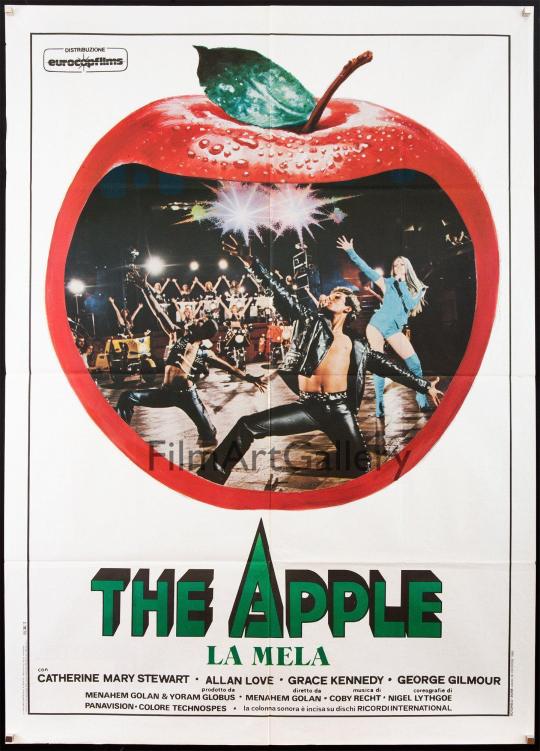









New To Me - 2022
The Apple (1980, Menahem Golan)
The Celebration (1998, Thomas Vinterberg)
Ghostwatch (1992, Lesley Manning)
Heck (2020, Kyle Edward Ball)
Hi, Mom! (1970, Brian De Palma)
The Hole (1998, Tsai Ming-liang)
Nathan for You: Finding Frances (2017, Nathan Fielder)
The Plug Lady (2004, Anthony Saladino)
Starship Troopers (1997, Paul Verhoeven)
What Ever Happened to Baby Jane? (1962, Robert Aldrich)
+++
Afternoon (2005, Tsai Ming-liang)
All About Eve (1950, Joseph L. Mankiewicz)
American Movie (1999, Chris Smith)
Angelyne (1995, Robinson Devor & Michael Guccione)
Be My Cat: A Film for Anne (2015, Adrian Țofei)
Body Snatchers (1993, Abel Ferrara)
Bone (1972, Larry Cohen)
Disney’s FastPass: A Complicated History (2021, Kevin Perjurer)
Freddy Got Fingered (2001, Tom Green)
Fresh Kill (1994, Shu Lea Cheang)
In the Dark (2000, Clifton Holmes)
In the Darkness of Time (2001, Jean-Luc Godard)
The Last Broadcast (1998, Stefan Avalos & Lance Weiler)
log 1 (2019, Alexandre Galmard)
The Passion of Joan of Arc (1928, Carl Theodor Dreyer)
Pickle Surprise (1989, Tom Rubnitz)
The Player (1992, Robert Altman)
Prom Night (1980, Paul Lynch)
Senritsu Kaiki File Kowasugi! File 01 - Operation Capture the Slit-Mouthed Woman (2012, Koji Shiraishi)
Silent Night, Deadly Night III: Better Watch Out! (1989, Monte Hellman)
The Swimmer (1968, Frank Perry)
Tetsuo: The Iron Man (1989, Shinya Tsukamoto)
Veneno (2020, Javier Ambrossi, Javier Calvo, Mikel Rueda, & Álex Rodrigo)
Wandering (2021, Tsai Ming-liang)
War of the Worlds (2005, steven spielberg)
#best of 2022#personal#lists#the apple#the celebration#ghostwatch#holy heck#hi mom!#the hole#nathan for you#the plug lady#starship troopers#what ever happened to baby jane?
25 notes
·
View notes
Text
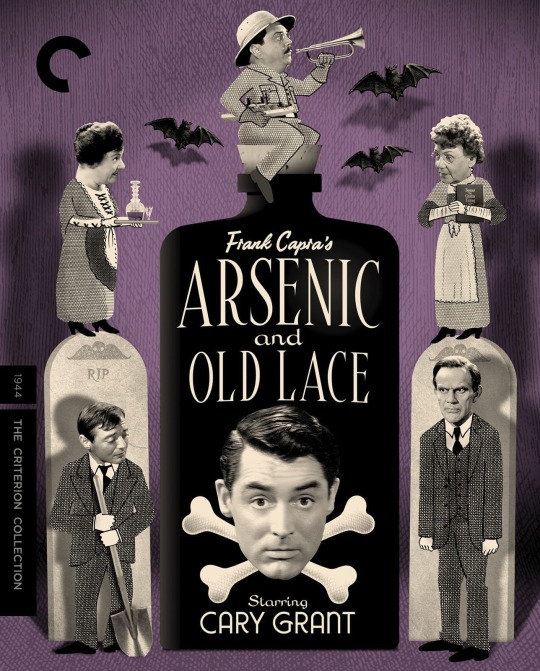
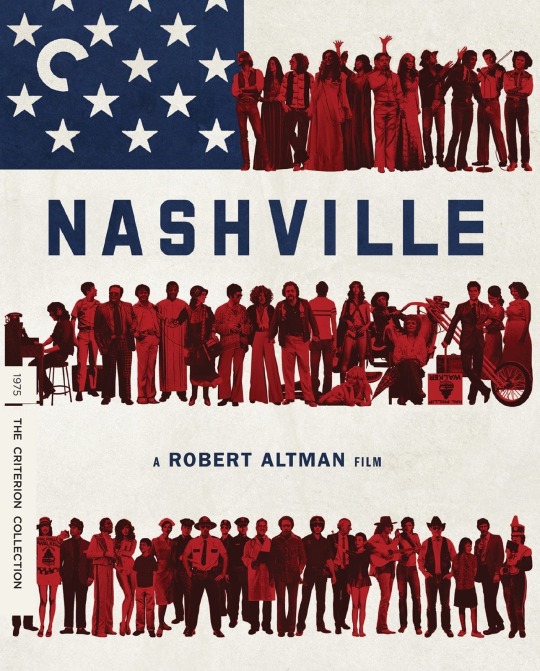

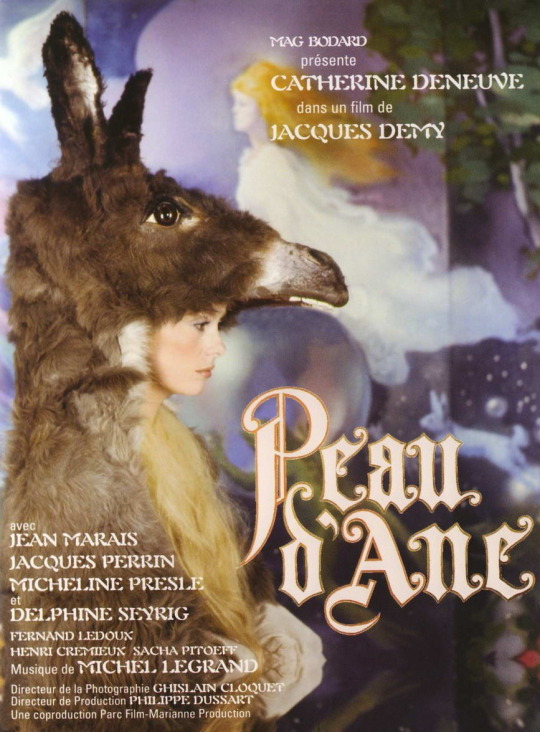
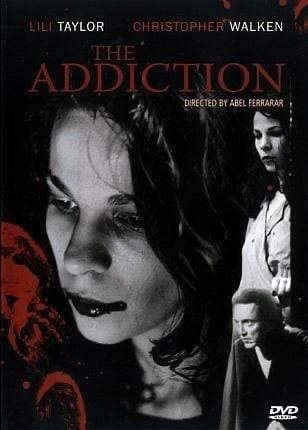

fave first watches from november 2022!
arsenic and old lace (1944) dir frank capra, nashville (1975) dir robert altman, peau d'âne (1970) dir jacques demy, the addiction (1995) dir abel ferrara, smooth talk (1985) dir joyce chopra.
25 notes
·
View notes
Text

Asia Argento and Willem Dafoe in New Rose Hotel (Abel Ferrara, 1998)
Cast: Christopher Walken, Willem Dafoe, Asia Argento, Annabella Sciorra, John Lurie, Kimmy Suzuki, Miou, Yoshitaka Amano, Gretchen Mol, Phil Neilson, Ken Kelsch, Ryuiki Sakamoto. Screenplay: Abel Ferrara, Christ Zois, based on a story by William Gibson. Cinematography: Ken Kelsch. Production design: Frank DeCurtis. Film editing: Jim Mol, Anthony Redman. Music: Schoolly D.
Abel Ferrara's New Rose Hotel is more an exercise in style than a satisfactory movie. The plot is simple: Fox (Christopher Walken) and X (Willem Dafoe) are agents for a Japanese technology firm plot tasked with raiding a top scientist from a German company. They do so by hiring a beautiful prostitute called Sandii (Asia Argento) to seduce the scientist, whom they will set up in a laboratory in Marrakech. The plot goes awry when one of the agents falls in love with Sandii and overlooks some evidence that she may be working for the German company, putting the agents in danger. Padding this plot into a 93-minute movie means a lot of filler, including an extended opening scene set in a kinky nightclub where some lugubrious songs get sung and the necessary exposition gets spilled. Then there are some irrelevant sex scenes while the scheme is being set up, and after it fails there are extended flashbacks that add little to our understanding of what has happened. The three leads are capable and watchable, but the film leaves us with no revelations about corporate rivalry in the age of technology that we haven't seen in better movies.
3 notes
·
View notes
Text
Portami sulla luna
Lasciami giocare tra le stelle
Riempi il mio cuore con la canzone
E lasciami cantare per sempre
Sei tutto ciò che desidero
Tutto ciò che venero e adoro
Frank Sinatra - Fly Me to the Moon
📸 Eclissi a Ferrara
2 notes
·
View notes
Text
Edgar, opera dimenticata di Giacomo Puccini
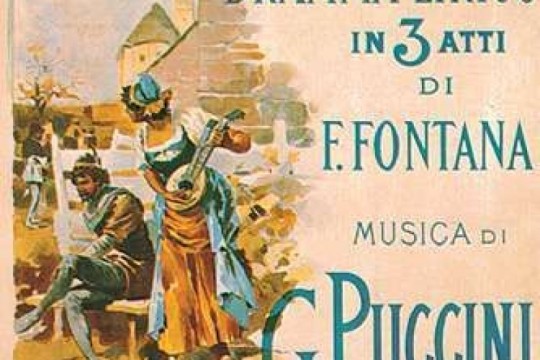
Il 29 novembre 1924 moriva, in un ospedale di Bruxelles, il leggendario compositore Giacomo Puccini, autore di capolavori come La Boheme e Madame Butterfly, ma anche di Edgar, lavoro ispirato alla grand opera francese…
Nel 1889 il successo delle Villi convinse l’editore Giulio Ricordi ad accogliere Puccini nella sua scuderia, a concedergli uno stipendio fisso mensile di 200 lire e a commissionargli una seconda opera, Edgar, su libretto di Ferdinando Fontana, tratta dal poema drammatico La coupe et les lèvres di Alfred de Musset.
La composizione impegnò Puccini per quattro anni, mentre cominciò la sua travagliata relazione con Elvira Bonturi, da cui ebbe il primogenito Antonio.
La prima rappresentazione di Edgar, avvenuta il 21 aprile 1889 diretta da Franco Faccio e con Romilda Pantaleoni alla Scala di Milano, non fu quel successo che Puccini e Ricordi si aspettavano, infatti fu seguita da solo due repliche.
Subito dopo Puccini iniziò a revisionare la partitura in vista di una possibile ripresa, che avvenne soltanto nel settembre 1891 al Teatro del Giglio di Lucca, con un grande successo.
La rappresentazione lucchese servì a Puccini per definire una nuova versione in tre atti, abolendo il quarto e riducendo il secondo, che andò in scena nel 1892 a Ferrara, Torino, Madrid e Brescia.
Una terza versione fu preparata per il festival pucciniano organizzato nel 1905 a Buenos Aires, ma l’esito fu deludente, venne poi rappresentata a La Valletta nel 1920
In Italia Edgar tornò prima alla radio, il 10 agosto 1935, e poi sulla scena, al Teatro Lirico di Milano, il 24 dicembre 1944.
Il 25 giugno 2008 l'opera fu finalmente allestita, al Teatro Regio di Torino, in una versione simile a quella della prima scaligera con José Cura ed Amarilli Nizza e venne riproposta anche al Teatro Comunale di Bologna nel 2010.
La vicenda comincia nel 1302, in un villaggio delle Fiandre, durante la Messa mattutina, quando Tigrana, una zingara, intona una canzone blasfema suscitando l’indignazione del paese che l’ha allevata.
La zingara viene difesa dal giovane Edgar il quale, nonostante sia innamorato dalla dolce Fidelia, non riesce a sottrarsi al fascino di Tigrana tanto da decidere di fuggire con lei.
In poco tempo i due amanti vivono in un sontuoso castello, ma Edgar non comincia a sentire molto intensamente la nostalgia per la sua casa e Fidelia così, sentendo rulli di tamburi e suoni di fanfare militari che accompagnano un esercito diretto a una battaglia, decide di cambiare vita e segue, ignorando i tentativi di Tigrana per trattenerlo, il gruppo guidato da Frank, fratello di Fidelia
L’esercito fiammingo vince lo scontro, ma subisce ingenti perdite e tra gli scomparsi c’è anche Edgar per il quale nei pressi del villaggio si stanno celebrando solenni funerali.
Alla celebrazione delle gesta di Edgar c’è un frate che ricorda a tutti le numerose colpe di cui si è macchiato il giovane suscitando la reazione di Fidelia, decisa a difendere la memoria dell’amato. Finita la cerimonia funebre, giunge Tigrana che viene avvicinata dal frate che, offrendole oro e oggetti preziosi, le suggerisce una macchinazione ai danni del morto.
Tigrana così ammette di essere stata l’amante di Edgar aggiungendo che era intenzionato a tradire la sua patria.
Alla sue affermazioni alcuni soldati si avvicinano per profanare la bara, ma, aprendola, trovano soltanto l’armatura così il frate, che altri non è se non Edgar, si spoglia del suo saio e accusa Tigrana di fronte a tutti.
Fidelia, dopo una notte insonne e tormentata, si reca al balcone per guardare le sue rose e , alla vista di Edgar e del fratello, sviene.
Ripresasi, la giovane rassicurata da Edgar che le propone il matrimonio da celebrarsi quello stesso giorno.
Mentre si sta preparando per le nozze Fidelia è raggiunta da Tigrana che la uccide con un pugnale poi la zingara, senza pentirsi, viene condotta al patibolo.
Read the full article
0 notes
Text
50 anni di fotografie e racconti di Guido Harari

Noi di Vortici.it ci siamo sempre occupati di fotografia sia dal punto di vista storico, sia a proposito di eventi culturali.
Ed è proprio di un’esposizione davvero particolare che scegliamo di parlarvi.
La Fondazione Ferrara Arte e il Servizio Musei d’Arte del Comune di Ferrara presentano la grande mostra antologica dedicata a Guido Harari, fotografo e giornalista musicale italiano.
Un percorso espositivo affascinante è allestito nelle sale di Palazzo dei Diamanti con oltre 300 fotografie, installazioni e filmati originali, proiezioni e incursioni musicali, insieme a un set fotografico e incontri con l’autore.
50 anni di fotografie e racconti di Guido Harari: la mostra a Palazzo dei Diamanti a Ferrara (16 Luglio - 1 Ottobre 2023)
La mostra “GUIDO HARARI. INCONTRI – 50 anni di fotografie e racconti”, in corso dal 16 luglio al 1 ottobre 2023 a Palazzo dei Diamanti di Ferrara, ripercorre tutte le fasi dell’eclettica carriera di Guido Harari: dagli esordi in ambito musicale come fotografo e giornalista, alle numerose copertine di dischi per artisti del calibro di Fabrizio De André, Bob Dylan, Vasco Rossi, Kate Bush, Paolo Conte, Lou Reed, Frank Zappa, fino all’affermazione di un lavoro che nel tempo è rimbalzato da un genere all’altro – editoria, pubblicità, moda, reportage – privilegiando sempre il ritratto come racconto intimo degli incontri con le maggiori personalità del suo tempo.
Il percorso espositivo parte dagli anni Settanta, quando Harari, ancora adolescente, inizia a coniugare le sue due grandi passioni: la musica e la fotografia.
Immagini e sequenze inedite, insieme a filmati d’epoca di backstage, videointerviste, il documentario di Sky Arte a lui dedicato e l’audioguida con la voce narrante dello stesso Harari conducono il visitatore nel cuore del suo processo creativo.
La mostra propone anche una sezione dedicata alla passione parallela per la curatela di libri intesi come una forma di “fotografia senza macchina fotografica” oltre che occasioni d’incontri vecchi e nuovi, da cui sono nate le biografie illustrate di Fabrizio De André, Fernanda Pivano, Mia Martini, Giorgio Gaber e Pier Paolo Pasolini e una dedicata a immagini “di ricerca” inedite che Harari va realizzando da qualche anno come sua personale forma di meditazione in progress.
Una sezione di grande impatto è intitolata “Occhi di Ferrara”, dove, durante lo svolgimento della mostra, Harari esporrà di volta in volta i ritratti su prenotazione che realizzerà nella Caverna Magica, un set fotografico allestito alla fine del percorso espositivo. Oltre alla stampa firmata dal fotografo che sarà consegnata in tempo reale ai soggetti ritratti, una seconda stampa sarà esposta, anche questa in tempo reale, sviluppando una sorta di “mostra nella mostra” che rappresenterà idealmente gli sguardi della città che la ospita.

Guido Harari
LE SEZIONI DELLA MOSTRA:
LIGHT MY FIRE. IL BIG BANG DI UNA PASSIONE
La mostra prende le mosse dalla ricostruzione idealizzata della stanza di Harari ragazzino, con tutta l’iconografia da cui ha tratto ispirazione: poster, foto, riviste e libri d’epoca, pagine di diario, copertine di dischi, autografi e memorabilia.
FRONTE DEL PALCO
In una sala immersiva, prende vita la dimensione propulsiva dei concerti, cogliendo la melodia cinetica di artisti come: Bowie, i Queen, Bob Dylan, Bruce Springsteen, Bob Marley, Pink Floyd, Paul McCartney, Rolling Stones, Miles Davis, Neil Young, Clash, Led Zeppelin, Prince, Police, Talking Heads, Michael Jackson, Stevie Wonder, James Brown, Nirvana, Simon & Garfunkel, Santana, Ray Charles, Tina Turner, Vasco Rossi, Giorgio Gaber.
ALL AREAS ACCESS
Uno sguardo privilegiato e molto ravvicinato sul backstage di tournée e sale di registrazione, alla ricerca di un’intimità con gli artisti, che esploderà presto nella dimensione più esclusiva del ritratto: da Fabrizio De André a Paolo Conte, Lou Reed, Laurie Anderson, Peter Gabriel, Kate Bush, Frank Zappa, Keith Jarrett, Mark Knopfler, Vasco Rossi, Claudio Baglioni, Gianna Nannini, PFM e altri.
REMAIN IN LIGHT
I ritratti dei musicisti del cuore, tra cui Tom Waits, Lou Reed e Laurie Anderson, Jeff Buckley, George Harrison, Keith Richards, Patti Smith, B.B. King, Frank Zappa, Van Morrison, Bob Marley, Eric Clapton, Elton John, Kate Bush, i Clash, Joni Mitchell, Leonard Cohen, Philip Glass, Peter Gabriel, Nick Cave, George Michael, R.E.M., Iggy Pop, Ute Lemper, Brian Eno e molti altri.
IL RITRATTO COME INCONTRO
Alcuni incontri del cuore: lunghe frequentazioni e collisioni isolate, tra questi José Saramago, Wim Wenders, Richard Gere, Pina Bausch, Greta Thunberg, Luis Sepulveda, Amos Oz, Zygmunt Bauman, Allen Ginsberg, Gregory Corso, Hanna Schygulla, Lindsay Kemp, Daniel Ezralow, Alejandro Jodorowsky, Noa, Mikhail Baryshnikov, Frank O. Gehry, Robert Altman, Jean-Luc Godard, Madre Teresa.
LA MUSICA CHE MI GIRA INTORNO
Le eccellenze della canzone italiana d’autore, le grandi signore della musica italiana, la primavera dei gruppi indie: da Paolo Conte a Franco Battiato, Fabrizio De André, Lucio Dalla, Ivano Fossati, Gino Paoli, Giorgio Gaber, Enzo Jannacci, Pino Daniele, Francesco De Gregori, Roberto Vecchioni, Zucchero, Francesco Guccini, Vasco Rossi, Ligabue, Vinicio Capossela, Ezio Bosso, Morgan, Litfiba, C.S.I., Milva, Ornella Vanoni, Mia Martini, Loredana Bertè, Alice, Giuni Russo, Antonella Ruggiero.
ITALIANS
I protagonisti della cultura e della società, eccellenze italiane tra il Novecento e il Duemila, fotografate quasi fossero tutte delle rockstar: da Gianni Agnelli a Rita Levi Montalcini, Ennio Morricone, Nanni Moretti, Roberto Benigni, Umberto Eco, Michelangelo Antonioni, Dario Fo e Franca Rame, Bernardo Bertolucci, Carmelo Bene, Roberto Baggio, Ettore Sottsass, Renzo Piano, Carla Fracci, Vittorio Gassman, Lina Wertmuller, Monica Vitti, Gino Strada, Luciano Pavarotti, Sophia Loren, Giorgio Armani, Carla Fracci, Margherita Hack, Alda Merini, Marcello Mastroianni, Tiziano Terzani, Michelangelo Pistoletto, Enzo Biagi, Miuccia Prada, Liliana Segre, Toni Servillo e molti altri.
IL SENTIMENTO DELLO SGUARDO. I FOTOGRAFI
I ritratti di alcuni grandi fotografi che hanno ispirato Harari, colti in primi piani che emergono dal buio, quasi a volerlo esorcizzare: Duane Michals, Richard Avedon, Sebastião Salgado, Helmut Newton, Steve McCurry, Letizia Battaglia, Ferdinando Scianna, Nino Migliori, Gianni Berengo Gardin, Mario Giacomelli, Franco Fontana, Anton Corbijn con Tom Waits, Paolo Pellegrin.
FOTOGRAFARE SENZA MACCHINA FOTOGRAFICA
Una passione parallela: la curatela dei libri, l’editing di testi, documenti e immagini, il recupero e il restauro di archivi dimenticati, il progetto grafico come elemento essenziale del racconto, libri come occasioni di incontri vecchi e nuovi. Le biografie illustrate di Fabrizio De André, Fernanda Pivano, Mia Martini, Giorgio Gaber e Pier Paolo Pasolini, presentate con doppie pagine tratte dai libri e una video proiezione con filmati inediti di lavorazione relativi al libro “Pasolini. Bestemmia”.
IN CERCA DI UN ALTROVE
Antidoti ai rituali della fotografia commerciale e ai ritratti di celebrità, sono schegge di reportage, ricerche e sperimentazioni inedite, alla ricerca di nuovi linguaggi che puntino oltre la fotografia.
OCCHI DI FERRARA
Durante il periodo di apertura della mostra, nell’ultima sala del percorso saranno esposti in tempo reale i ritratti che Guido Harari avrà realizzato nella Caverna Magica, dando vita ad una sorta di “mostra nella mostra” che, una volta completata, rappresenterà idealmente gli sguardi della città.
CAVERNA MAGICA
A margine del percorso espositivo il visitatore che lo desideri, prenotandosi in anticipo sul sito www.mostraguidoharari.it, potrà farsi ritrarre da Harari nel suo set fotografico, allestito nello spazio adiacente al bookshop di Palazzo dei Diamanti.
Immagine di copertina: Pikasus
Foto: All About Jazz

Read the full article
0 notes
Text
Legendary Metal Trio BANG to Release New Album “Another Me”
Often called America’s answer to Black Sabbath, one of the most unsung bands in the history of US hard rock music, BANG, is back with a new album “Another Me”! Featuring all 3 members of the classic line-up: bassist/vocalist Frank Ferrara, guitarist Frankie Gilcken and original drummer/lyricist Tony Diorio along with new drummer Danny Piselli.
“We’re stoked about our new album ‘Another Me’ … It…

View On WordPress
0 notes
Text
The King of New York(1990) by Abel Ferrara
“I must’ve been away too long because my feelings are dead. I feel no remorse”

This was such a badass movie from the very beginning, it sinks it hooks in and doesn’t let go until the ending. Abel Ferrara proves he is a master of the film making process as he builds an entire world around one great man, a man so great he influenced the true “King of New York”, Biggie.
Frank White, played by Christopher Walken, is the epitome of strength and ultimate power as we see him leaving a long, but peaceful stay in prison. As soon as he meets back with his crew it’s evident that his enthusiasm and confidence in them make you dance along with him.
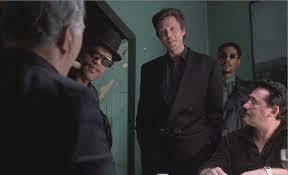
Jimmy Jump, played by Laurence Fishbourne, is the young leader of the rough and good timing crew behind White. Although Walken’s Frank White is clearly the star, I think Jimmy is arguably the better character. His lines throughout not only cut the tension rising the entire run time, but they also prove how menacing and in control in feels.
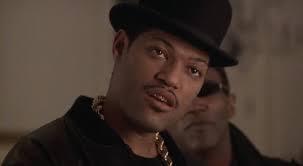
While I give Walken and Fishbourne most of the credit, this film would be nothing without the many side characters who truly bring the dark and grimy world of New York City to life.
There are standouts like Horatio Cain… I mean David Caruso playing the hardnosed detective Dennis Gilley, whose drive to stop White endangers those he cares about most.
Caruso is surrounded by his squad headed up by Victor Argo’s veteran cop Roy Bishop and the spectacular “pre-Blade” Wesley Snipes as Thomas Flanigan.

I can easily say this is now my favorite Christopher Walken movie… it also happens to now be my favorite Laurence Fishbourne movie… and especially my favorite “Robin Hood” entry.
Overall this film scores:
5 out of 5 Garlic Cloves
#christopher walken#laurence fishburne#abel ferrara#cinema#movie review#1990s movies#csi miami#biggie smalls#garlic
0 notes
Text
Powerbomb diving attack combination
- CHRIS HARRISON'S MOUTH
- CHRISTINA HENDRICKS'S UPPER ARM
- SHAILENE WOODLEY'S CHEEK (CHALK FARM)
- SARAH MICHELLE GELLAR'S ARM
- JAY CUTLER'S LIP
- RAFAEL NADAL'S CHEEK
- DAVID ARQUETTE'S BOTTOM
- PETER FACINELLI'S KNEE (PIMLICO)
- JESSICA LOWNDES'S EAR
- BRYCE DALLAS HOWARD'S BACK (PICCADILLY CIRCUS)
- BLAKE SHELTON'S THUMB
- KATRINA BOWDEN'S WAIST
- REESE WITHERSPOON'S HAIR
- KRIS HUMPHRIES'S TOOTH (WOODFORD)
- LILY ALLEN'S FIST
- ANNE HATHAWAY'S TOE
- STEVEN TYLER'S TONGUE (UPMINSTER BRIDGE)
- TIESTO'S ELBOW (PIMLICO)
- JERRY FERRARA'S HAIR (RUSSELL SQUARE)
- MILO VENTIMIGLIA'S FIST
- JAMES RODRIGUEZ'S EAR
- NATASHA RICHARDSON'S BACK (STOCKWELL)
- JAMIE KENNEDY'S NOSE (KING'S CROSS ST. PANCRAS)
- KRISTEN STEWART'S HIP (RUSSELL SQUARE)
- JESSE JAMES'S HEAD
- ELISABETH MOSS'S BACK
- PRINCESS DIANA'S THIGH (KENSAL GREEN)
- ASHLEY HEBERT'S FIST (QUEEN'S PARK)
- ROSE MCGOWAN'S EYE
- HARRISON FORD'S EYE
- OZZY OSBOURNE'S FINGER (ARNOS GROVE)
- MATT BOMER'S BUTTOCKS
- SHOSHANNA LONSTEIN'S BUTTOCKS
- JACK NICHOLSON'S FOOT
- LEVI JOHNSTON'S THIGH
- CHAD KROEGER'S LIP (BARONS COURT)
- KERRY DIAMOND'S TOE
- ELIZABETH TAYLOR'S HIP
- NIKKI REED'S NOSTRIL
- AARON ECKHART'S NECK
- CASH WARREN'S TONGUE (MONUMENT)
- FRANK OCEAN'S UPPER ARM
- KEVIN HART'S HIP
- GINNIFER GOODWIN'S ELBOW
- CALVIN HARRIS'S HIP
- RICHARD GERE'S LOWER LEG
- DEBRA MESSING'S HAND
- SIMON DOONAN'S WRIST
- QUEEN LATIFAH'S FOREHEAD
- SALMA HAYEK'S BOTTOM
0 notes
Photo

Hi, you have several more weekends to catch this. I'm proud to be included... thanks @lstreicherstudio & @proartsjc! . Curator: Linda Stricher @lstreicherstudio . Exhibiting Artists: Josephine Barreiro @josephinebarreiro Guillermo Bublik @guillermobublik Pam Cooper @pam_cooper Dorie Dahlberg @dorie_dahlberg Peter Delman @peterdelmanjc Eileen Ferrara @eileenferarastudio Jodie Fink @finkjodie Bennett Gewirtz @bennettgewirtz_art Donna Greenberg @d.greenbergarts Cheryl Gross @cmmgross Susan Evans Grove @susanevansgrove Frank Ippolito @frankippolitoart Beatrice Mady @beatrice_mady Kevin McCaffrey @kmac329 Brian McCormack @hamiltonstreetgallerybb Adrian Menichelli @bigbongoart Christy OConnor @christyoconnorart Steven J Patton @jstevenpattonart Laurie Pettine @lauriepettineart Deborah Pohl @deborahpohlart Clara Richardson @claralaughinggull Bill Rybak @billrybakfinearts Gale Sasson @galesasson Daryl-Ann Saunders @da_saunders Leslie Sheryll @lesliesheryllartist Francisco Silva @francisco_silva_art Joel Simpson @joelssimpsonphoto Joan Sonnenfeld Brad Terhune @brad_terhune_studio Ann Vollum @annvollum (at 150 Bay Street-Jersey City) https://www.instagram.com/p/Cpmw-bHuJiV/?igshid=NGJjMDIxMWI=
0 notes
Text
Natale e intrattenimento, i segreti del successo dei Game Show

Natale e intrattenimento, i segreti del successo dei Game Show.
Finalmente, anche per quest’anno, è tornato il Natale, momento per stare insieme, momento per riunire la famiglia. E così, mentre si cucina per il cenone o mentre si aspettano gli ultimi parenti, si accende la televisione per fare un po’ di compagnia, per fare un po’ di sottofondo o, più semplicemente, per ingannare il tempo.
E oltre a dei classici come “Una poltrona per due” c’è soprattutto un genere televisivo a fare compagnia e ad entrare, con garbo, semplicità e tanta simpatia, nelle case degli italiani. Stiamo parlando dei game show, ovvero il gioco televisivo. Un successo epocale del piccolo schermo, iniziato nel 1938 in Inghilterra con “Spelling Bee” e arrivato in tutto il mondo, passando per programmi storici come “Chi vuol essere milionario?” oppure l’amatissima “Eredità”.
Un successo che non è passato indifferente anche ad altri settori, come ad esempio quello del gioco pubblico. Una delle ultime novità create dalla Evolution Gaming è infatti quella che porta il nome di Crazy Time, slot online che unisce l’atmosfera del casinò al divertimento dei game show.
Ma i game show, dicevamo, vanno d’accordo soprattutto con il Natale. E il re di questo genere televisivo è proprio Nicola Savino, che è sbarcato in prima serata su TV8 con lo speciale “100% Natale”, prodotto dalla Banijay Italia. Tanti gli ospiti famosi in studio da Angelo Pisani a Ciro Ferrara, da Asia Argento a Gianmarco Tamberi che si sfideranno per acciuffare un premio finale da devolvere interamente in beneficienza, alla Fondazione “Progetto Arca”.
Non solo quiz, però, i game show sono anche un genere che fa ridere, che tiene compagnia, che fa divertire. È questa la ricetta fondamentale di “LOL Xmas Special: Chi ride è fuori”. Si tratta della versione natalizia del famoso format condotto da Fedez: una manciata di comici di grande spessore chiusi in una stanza e un solo divieto, quello di non ridere. In questo speciale di Natale, arrivato sulla piattaforma di Prime Video, troviamo Mara Maionchi, Frank Matano, Maria Di Biase, Michela Giraud, Mago Forrest e Lillo Petrolo, per un game show tutto da ridere.
Altri titoli da mettere sul televisore in questo Natale, secondo la lista stilata da Team World, sono quelli di “La grande bugia”, ideato per bambini e disponibili su Disney Plus, oppure “Awake: The Million Dollar Game”, che si trova invece disponibile su Netflix. Per questo 25 dicembre, insomma, a voi la scelta: o la tombola oppure un bel game show....
#notizie #news #breakingnews #cronaca #politica #eventi #sport #moda
Read the full article
0 notes
Text
My 100 best movies of all time
As a start, this is a top 100 I made back in 2018.
To make things tasty, the first rule I followed was "no more than one movie per director". The second one was "don't get mad trying to order that top 100, just write it down".
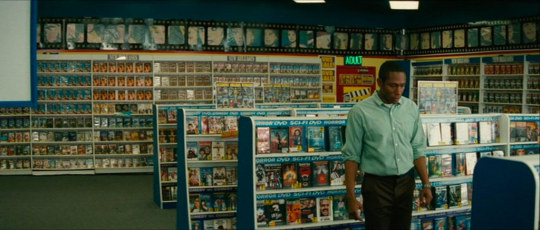
I told myself a lot of lies about the fact that this top could change any day but I'm too lazy to make a new one every day. So here I am, stuck with this one :)
BEST MOVIES OF ALL TIME ACCORDING TO ME
(with no particular order)
Kiss Me Deadly (1955, Robert Aldrich)
The Professionals (1966, Richard Brooks)
Indagine su un cittadino al di sopra di ogni sospetto (1970, Elio Petri)
Queimada (1969, Gillo Pontecorvo)
C'eravamo tanto amati (1974, Ettore Scola)
Reservoir dogs (1992, Quentin Tarantino)
The Killing (1956, Stanley Kubrick)
Notorious (1946, Alfred Hitchcock)
The Asphalt Jungle (1950, John Huston)
Les enfants du paradis (1946, Marcel Carné)
Kiss Me Stupid (1964, Billy Wilder)
Sullivan's Travels (1941, Preston Sturges)
The Shop Around The Corner (1940, Ernst Lubitsch)
Rio Bravo (1959, Howard Hawks)
The Man Who Shot Liberty Valance (1962, John Ford)
The Conversation (1974, Francis Ford Coppola)
Le trou (1960, Jacques Becker)
Dead Poets Society (1989, Peter Weir)
Le salaire de la peur (1953, Henri-Georges Clouzot)
Judex (1963, Georges Franju)
The Departed (2006, Martin Scorsese)
The Prestige (2006, Christopher Nolan)
Unbreakable (M. Night Shyamalan)
Le cercle rouge (1970, Jean-Pierre Melville)
Il buono, il brutto, il cattivo (1966, Sergio Leone)
Curse of the Demon (1957, Jacques Tourneur)
Singin' In The Rain (1952, Stanley Donnen - Gene Kelly)
Hero (1992, Stephen Frears)
It's a Wonderful Life (1946, Frank Capra)
All About Eve (1950, Joseph L. Mankiewicz)
Das indische Grabmal (1959, Fritz Lang)
Le voleur (1967, Louis Malle)
Born Yesterday (1950, George Cukor)
Ben-Hur (1959, William Wyler)
Seven Samurai (1954, Akira Kurosawa)
Ginger e Fred (1986, Federico Fellini)
Small Time Crooks (2000, Woody Allen)
Barton Fink (1991, Joel and Ethan Coen)
Batman returns (1992, Tim Burton)
I due superpiedi quasi piatti (1977, Enzo Barboni)
The Goonies (1985, Richard Donner)
Carlito's Way (1993, Brian De Palma)
French Connection (1971, William Friedkin)
The Incredible Shrinking Man (1957, Jack Arnold)
Gremlins 2 (1990, Joe Dante)
The Bad and the Beautiful (1952, Vincente Minnelli)
Warlock (1959, Edward Dmytryk)
The Unknown (1927, Tod Browning)
Johnny Got His Gun (1971, Dalton Trumbo)
El ángel exterminador (1962, Luis Buñuel)
Le grand blond avec une chaussure noire (1972, Yves Robert)
Down by Law (1986, Jim Jarmusch)
Jurassic Park (1993, Steven Spielberg)
Ladri di biciclette (1948, Vittorio De Sica)
Man without a Star (1955, King Vidor)
Peter Ibbetson (1935, Henry Hathaway)
City Lights (1931, Charlie Chaplin)
Il mio nome è Nessuno (1973, Tonino Valerii)
Excalibur (1981, John Boorman)
Dance of the Vampires (1967, Roman Polanski)
Au hasard Balthazar (1966, Robert Bresson)
Be Kind Rewind (2008, Michel Gondry)
The Fly (1986, David Cronenberg)
Mononoke hime (1997, Hayao Miyazaki)
Les Douze Travaux d'Asterix (1976, René Goscinny - Albert Uderzo)
Touch Of Evil (1958, Orson Welles)
Star Wars (1977, George Lucas)
The Empire Strikes Back (1980, Irvin Kershner)
Groundhog Day (1993, Harold Ramis)
The Front (1976, Martin Ritt)
Big (1988, Penny Marshall)
El secreto de sus ojos (2009, Juan José Campanella)
Amores perros (2000, Alejandro González Iñárritu)
El espinazo del diablo (2001, Guillermo del Toro)
The Man in the White Suit (1951, Alexander Mackendrick)
Village of the Damned (1960, Wolf Rilla)
The Thing (1982, John Carpenter)
Ms. 45 (1981, Abel Ferrara)
The Gunfighter (1951, Henry King)
Copland (1997, James Mangold)
Terminator 2 (1991, James Cameron)
Starship Troopers (1997, Paul Verhoeven)
Le Schpountz (1938, Marcel Pagnol)
12 Monkeys (1995, Terry Gilliam)
Man on the Moon (1999, Milos Forman)
Imitation of Life (1959, Douglas Sirk)
The Most Dangerous Game (1932, Ernest B. Schoedsack and Irving Pichel)
A Perfect World (1993, Clint Eastwood)
Dances with Wolves (1990, Kevin Costner)
Gentleman Jim (1942, Raoul Walsh)
Good Will Hunting (1997, Gus Van Sant)
Elephant Man (1980, David Lynch)
Casablanca (1942, Michael Curtiz)
The Man with the Golden Arm (1955, Otto Preminger)
The Killers (1946, Robert Siodmak)
Punch-Drunk Love (2002, Paul Thomas Anderson)
L'Atalante (1934, Jean Vigo)
La classe américaine (1993, Michel Hazanavicius and Dominique Mézerette)
Back to the Future (1985, Robert Zemeckis)
Un singe en hiver (1962, Henri Verneuil)
1 note
·
View note